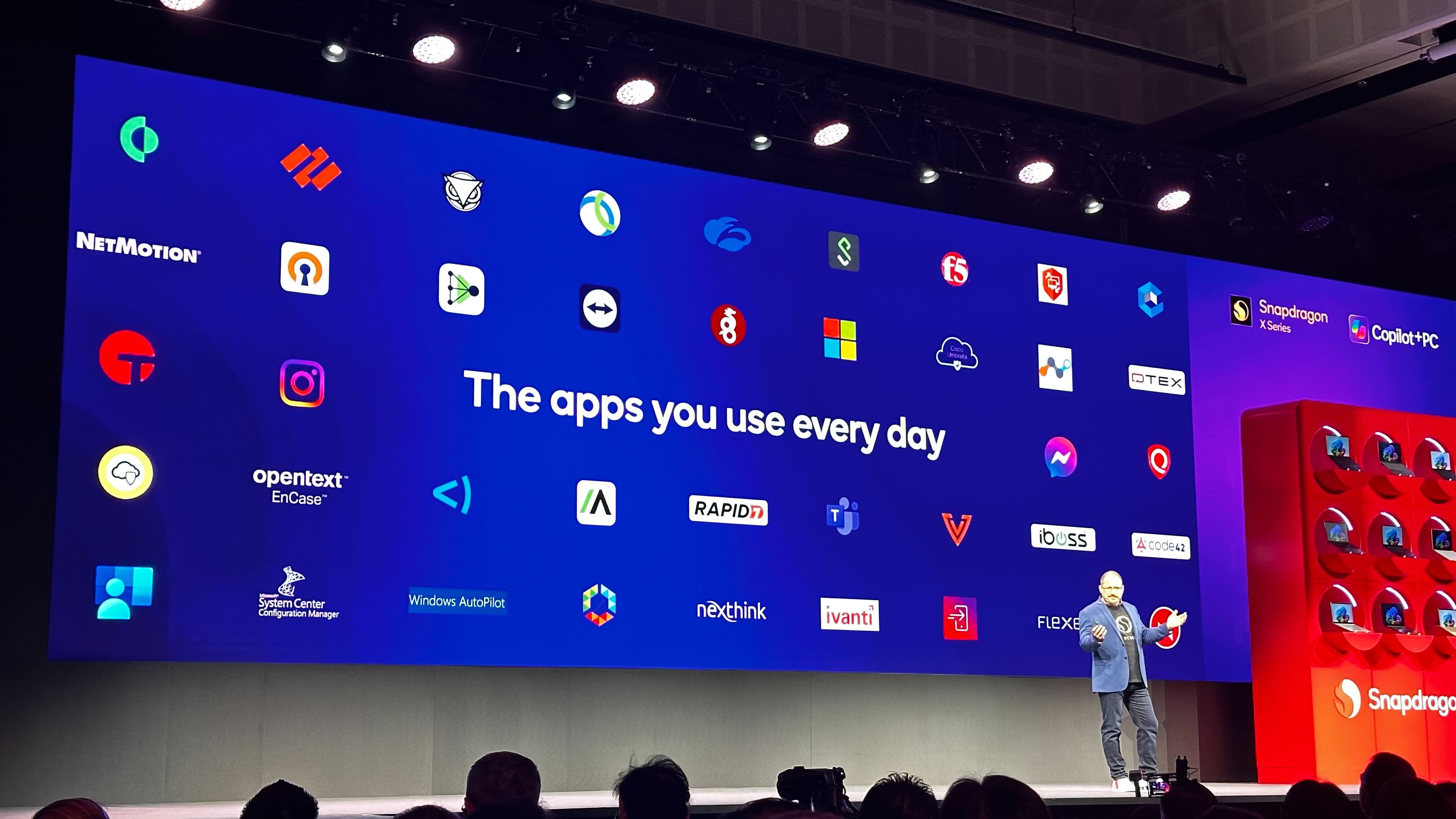Qualcomm claims it only copied "1% or less" of Arm technology for the Snapdragon X
As the trial continues, we're getting a clearer picture of what the fallout could look like

Recent updates
Updated to include testimony from Qualcomm CEO, Cristiano Amon, who took the stand on Wednesday.
A legal battle between Qualcomm and Arm Holdings officially kicked off Monday in a federal courtroom in Delaware — and we're getting a clearer picture of how the fallout could have seismic consequences on Qulacomm's Snapdragon X chip portfolio.
Arm, the UK-based semiconductor and software design firm responsible for chip architecture used by companies like Apple and Nvidia, alleges that San Diego-based Qualcomm's series of Snapdragon X chipsets copied key aspects of Arm's architecture and, as a result, constitute copyright infringement.
Earlier this fall, the dispute peaked when Arm issued a 60-day cancellation notice for Qualcomm's licenses to build and sell chipsets with Arm architecture.
Qualcomm's defense

At the heart of the Arm Ltd. v. Qualcomm Inc. suit — see the 48-page legal PDF here — is a small tech startup called Nuvia. Founded in 2019 by a group of former Apple engineers, Nuvia licensed Arm's architecture to create a server SoC (system-on-a-chip). Nuvia was acquired by Qualcomm in 2021, and the team was reassigned to develop a laptop processor. That processor eventually became much-lauded Snapdragon X Elite and X Plus chipsets.
Attorneys for Arm questioned Gerard Williams, the former Apple engineer who founded Nuvia and is now employed by Qualcomm, this week about whether Qualcomm violated its agreements with Arm by repurposing Nuvia's computer chip designs without permission.
As Reuters reports, "Williams said his team of developers started with Arm architecture and was asked to estimate the amount of Arm's technology in Nuvia's final designs.
"One percent or less," Williams responded.
Stay in the know with Laptop Mag
Get our in-depth reviews, helpful tips, great deals, and the biggest news stories delivered to your inbox.
Qualcomm also alleges that Arm Holdings intends to build its own chips and thus views Qualcomm as a competitor, leading to the tense legal entanglement.
Qualcomm's CEO, Cristiano Amon, testified in the case on Wednesday. Reuters reports, Amon explained Qualcomm's acquisition of Nuvia was intended to save Qualcomm as much as $1.4 billion a year in royalty payments to Arm.
"It justified the acquisition," Amon explained to the court. The $1.4 billion in savings was based on the expectation that Qualcomm's Snapdragon chipsets would open a large new market for the company, saving Qualcomm from higher fees for using pre-made CPU cores from Arm.
Arm's arguments

Arm is seeking to remedy this alleged breach of contract with the destruction of Nuvia's designs, including the Snapdragon X silicon.
As Reuters reports, Arm argues that Nuvia used licensed Arm technology to develop chips. The licensed architecture is at the base of Qualcomm's new Snapdragon X processors. Qualcomm was required to honor Nuvia's original royalty rates for its chip designs rather than pay Qualcomm's lower royalty fees.
While Qualcomm may claim that only 1% or less of the Oryon CPU cores — which are in Snapdragon X Elite chips — are based on Armv8 technology, Arm alleges that the original Armv8 licenses Nuvia agreed to cover all Arm technology as well as "derivatives" and "modifications" made from that tech.
Qualcomm's acquisition of Nuvia potentially lost Arm $50 million in royalty revenue.
What will happen to Snapdragon-based AI PCs?
The legal battle between Arm and Qualcomm has cast doubt on the future of Snapdragon-based AI PCs.
One piece of evidence included in the trial was a letter Arm sent to Qualcomm's customers, including Samsung, arguing that the lawsuit could lead to the destruction of Qualcomm's Snapdragon chips. Qualcomm alleges the letters were "misleading," but Arm CEO Rene Haas argued, "I felt we had a reason."
Further complicating the future of Snapdragon-powered laptops is a statement by Intel's interim co-CEO, Michelle Johnston Holthaus (via Tom's Hardware), who claimed, "if you look at the return rate for Arm PCs, you go talk to any retailer, their number one concern is 'I get a large percentage of these back,' because you go to set them up and the things that we just expect do not work, right." The statement was part of a larger conversation with Holthaus at the Barclays 22nd Annual Global Technology Conference.
While Qualcomm has asserted the return rates are "within industry norms" and that Arm's warnings of complete destruction are "misleading," the damage may already be done to the future of Windows on Arm.
What's next
Ultimately, a fallout between Qualcomm and Arm would be bad for both companies.
Qualcomm needs Arm licenses to continue selling chips for smartphones and cars in addition to the contentious laptop chips, and Arm makes a decent chunk of revenue from Qualcomm's chip sales.
Qualcomm also has major plans for CES 2025, which could include the rumored Snapdragon X Elite Gen 2, codenamed "Project Glymur."
Those plans could fall apart depending on the outcome of the court case.
The court case is expected to go into deliberations this week, possibly as early as Thursday, so we could know the final call before CES even rolls around.
More from Laptop Mag

A former lab gremlin for Tom's Guide, Laptop Mag, Tom's Hardware, and TechRadar; Madeline has escaped the labs to join Laptop Mag as a Staff Writer. With over a decade of experience writing about tech and gaming, she may actually know a thing or two. Sometimes. When she isn't writing about the latest laptops and AI software, Madeline likes to throw herself into the ocean as a PADI scuba diving instructor and underwater photography enthusiast.
